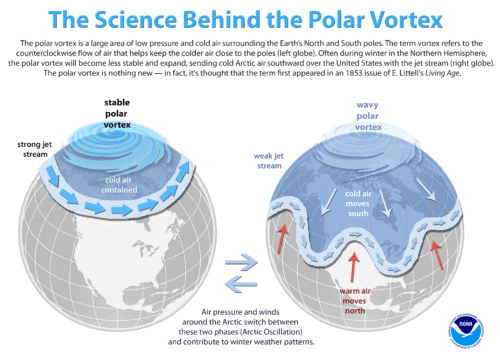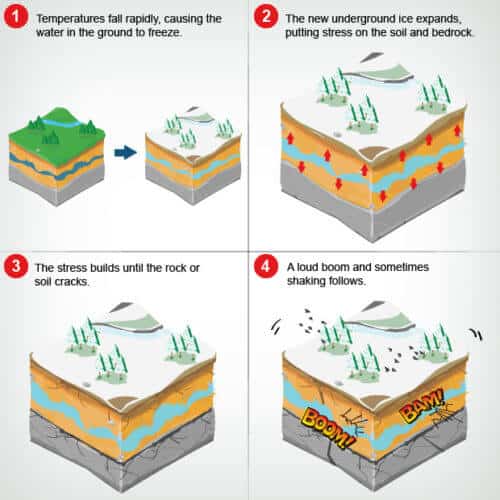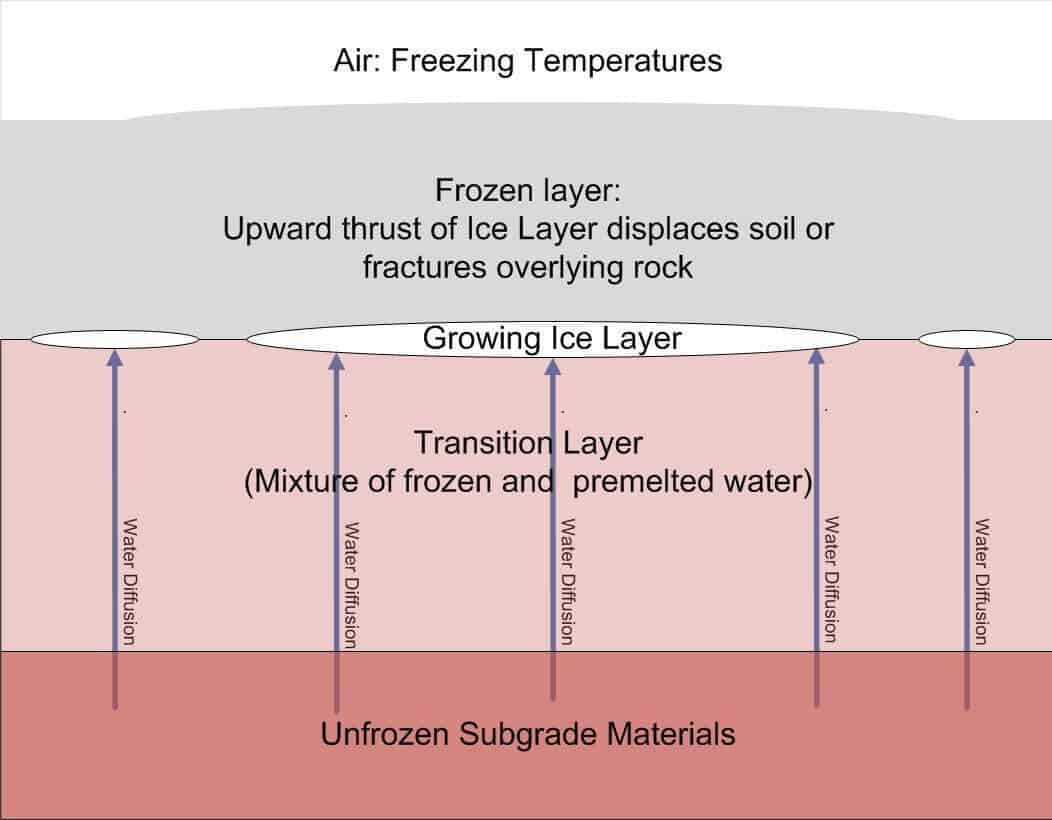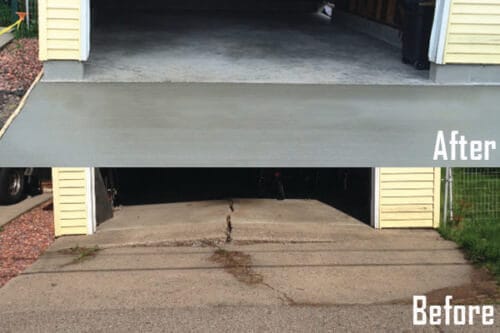Frost Quake (Cryoseism) and Concrete: Should I Worry about my concrete?
Real Quick: No, you probably don’t have to worry about your concrete due to that frost quake you just heard.
Cracking Open a Cold One (Sorry, Couldn’t Resist)
If I have to listen to one more person who isn’t from Minnesota ask me if it’s “cold enough for ya?” I’m going to crack! And I’m not the only one who is cracking. So is the ground itself. I’m sure you’ve heard the news that people have reported hearing a Frost Quake (also called an Ice Quake)!
That’s right. It’s so cold the ground is exploding, apparently. As of press time we’re going through the Polar Vortex to end all Polar Vortices.
And those temperature drops are causing all kinds of fun stuff to happen up here in the frozen north. You can ask why Polar Vortices happen, which is due to variances in the Jet Stream.
The Polar Vortex

Ok quick aside: Polar Vortices are blasts of ice cold air from the Arctic Circle which dip down through the Canadian plains and down into the Continental USA. Why does it do that sometimes and not all the time?
Because of the Jet Stream, Ladies and Gentlemen. The good old Jet Stream usually keeps that air tucked up tight in the Arctic Circle but lately (who knows why, must be some totally random thing) the effects of global climate have been putting stress on the Jet Stream, and it has been too weak to contain the cold air, thus it swoops down and smacks us around here in the north-midwest United States.
One effect of a Polar Vortex where the ground is concerned is a Cryoseism or Frost Quake.
The Frost Quake

That’s like Frost Heaving’s noisier (but not necessarily more destructive) brother. It’s a seismic event where extreme cold causes water in the ground freeze and expand so quickly that it releases kinetic energy in the rock and earth around it and there’s a loud BOOM and a vibration that goes with it. It’s scary stuff! If it happens near you, you’ll get the feeling that someone just dropped a bowling ball somewhere in your house.
The thing about frost quakes is they are often times a lot of sound and fury signifying nothing.
Usually they happen too deep in the ground to really cause anything more than a shock. The real damage is caused by, you guessed it, Frost Heaving. When the ice lenses build up in the soil and start to actually move the earth around.
A crysoseism is a quick, scary thing, but frost heaving is a slow process. Thus, while you should be more concerned about Frost Heaving, Cryoseisms are what will make the 10 PM news.
A Lot of Sound and Fury Signifying…

That’s right. As scary as a Frost Quake sounds, the Frost Quake itself isn’t the problem.
BUT it’s indicative that conditions may exist for the formation of the ice lenses that will eventually cause frost heaving. Remember our post on Frost Heaving?
That’s where the rubber really meets the road; or rather, it’s where the ice meets the road. Or where the… ground moving meets the concrete and… moves it out of the way… This metaphor worked out so much better before I started typing it.
Frost Heaving is the Real Problem

Frost Heaving doesn’t just happen overnight or over just one season. It happens over time, gradually, and thus it’s not going to get a lot of attention until it’s probably done a real number on your concrete. Garage floors are particularly susceptible to this problem.
So no, you don’t need to call your concrete contractor after a frost quake to come out and examine your property for damage. It’s highly unlikely that a frost quake did anything more than ruin a good night’s sleep and scare the bejeezus out of your kids and your dog.
Your sidewalk, on the other hand, remained untroubled. Shaken, but not stirred. Think of it like thunder going off underground as opposed to up in the sky. Maybe that’s not great consolation, but frost quakes in and of themselves don’t cause damage to your concrete or asphalt.
Frost Heaving on the other hand, can and will do damage to concrete and asphalt over time. The way you prevent that is by getting some insulation or radiant heating installed with your next concrete project. When you give us a call for a quote or send in your estimate request, make sure to note (if you’re interested) that you’re looking at insulating too. It’ll really extend the life of your concrete by giving it a fighting chance against frost heaving.

